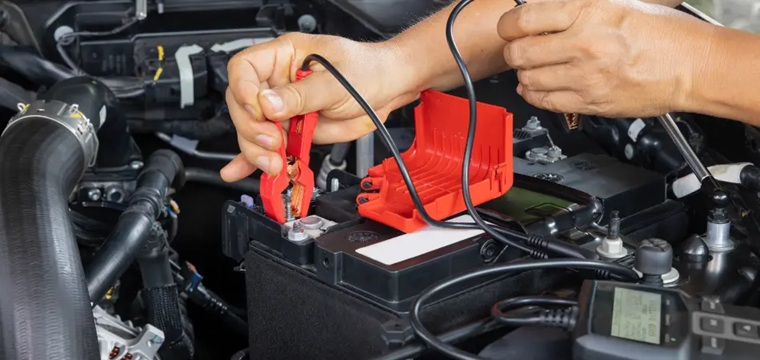Understanding what makes an agm battery different from conventional options is crucial for any modern vehicle owner. As automotive technology advances and fuel efficiency becomes paramount, these specialised power sources have emerged as the gold standard for vehicles equipped with demanding electrical systems and start-stop technology.
What Makes AGM Technology Special
The acronym AGM stands for Absorbent Glass Mat, referring to a sophisticated design where battery acid is absorbed into fibreglass mats rather than flowing freely like in traditional batteries. This fundamental difference creates a sealed, maintenance-free unit that delivers exceptional performance across multiple demanding scenarios.
Unlike conventional flooded batteries that require periodic topping up with distilled water, absorbed glass mat batteries are completely sealed. The electrolyte remains trapped within the glass mat separators, preventing spillage even if the battery casing becomes damaged. This design allows for flexible installation angles, which is why you’ll increasingly find these batteries mounted in boot compartments, under seats, or in wheel wells rather than under the bonnet.
The Start-Stop Revolution
Modern vehicles with start-stop systems automatically shut down the engine at traffic lights and restart when the brake pedal is released. This technology can improve fuel efficiency by approximately eight per cent whilst reducing carbon dioxide emissions by a similar margin. However, conventional batteries simply cannot withstand the punishment.
Consider the mathematics. A typical driver might start their vehicle three or four times daily. With start-stop technology, that same journey could require three or four engine starts on a single morning commute, depending on traffic conditions. Over a week, this could mean 1,500 engine starts. Research indicates a regular battery subjected to this cycling could fail in as little as 11 days, even when properly charged.
AGM batteries are engineered specifically for this challenge. Their cycle stability ensures the engine can be switched off and restarted repeatedly at short intervals without difficulty. The absorbed glass mat design delivers large cold start currents that powerfully engage the starter motor whilst reducing running time.
Performance Benefits Beyond Start-Stop
Whilst absorbent glass mat technology excels in start-stop applications, the advantages extend to conventional vehicles as well:
• Superior charge acceptance
The fibreglass mesh mats saturated with electrolyte carry current faster than liquid electrolyte, enabling AGM batteries to accept more amperage during recharging
• Enhanced durability
The sponge-like structure provides exceptional resistance to vibration and shock, crucial for vehicles operating in challenging conditions
• Extended service life
Market research shows battery failure ranks as the third most commonly reported new vehicle problem, yet AGM units demonstrate significantly longer lifespans
• Deep discharge capability
These batteries can be drained to 50 per cent capacity and recharged dozens of times daily without degradation
• Low self-discharge rate
An AGM battery left unused for a month loses only one per cent of its charge, compared to three to 20 per cent for conventional batteries
Singapore’s Climate Considerations
The hot and humid conditions in Singapore place additional demands on automotive batteries. As one industry source notes, “AGM batteries are well-suited for Singapore’s hot and humid climate” due to their robust construction and heat resistance capabilities.
Local workshops increasingly recommend AGM technology for high-end vehicles with advanced features. According to Singapore market data, “Many Singapore workshops recommend AGM car batteries for high-end vehicles with advanced features, such as start-stop engine functionality.”
The sealed design proves particularly valuable in tropical climates where extreme temperatures can cause rapid capacity decrease in conventional batteries. AGM battery units maintain large power reserves and withstand external temperature extremes more effectively than traditional options.
When to Choose AGM
Several scenarios make upgrading to absorbent glass mat technology advisable:
• Vehicles equipped with numerous electrical accessories beyond standard specifications, such as complex audio systems, heated seats, or advanced infotainment systems
• Short journey patterns where trips average less than 10 kilometres or annual mileage remains below 10,000 kilometres, preventing the alternator from fully charging the battery
• Seasonal vehicle use where long standstill periods risk premature discharge in conventional batteries
• Vehicles with regenerative braking systems that capture kinetic energy during deceleration
Installation and Maintenance Considerations
One critical point deserves emphasis. If your vehicle originally came equipped with an AGM battery, replacement must always be with another AGM unit. Modern vehicles employ battery management systems that monitor and optimise charging based on the specific battery technology installed. Installing an incompatible type can result in reduced performance, shortened lifespan, and potential damage to the vehicle’s electrical system.
The sealed construction eliminates maintenance requirements. There’s no need to check electrolyte levels or add distilled water. The valve-regulated design includes a special one-way valve protecting the battery from water loss if temperatures rise excessively.
Looking Forward
As automotive manufacturers implement stricter emission regulations and consumers demand vehicles with advanced electrical features, the market for AGM technology continues expanding. Industry projections indicate the global market will grow substantially through 2034, driven by electric vehicle adoption, renewable energy storage needs, and the proliferation of start-stop systems.
For vehicle owners seeking reliability, longevity, and performance in demanding applications, choosing an agm battery represents a sound investment in automotive power technology.




